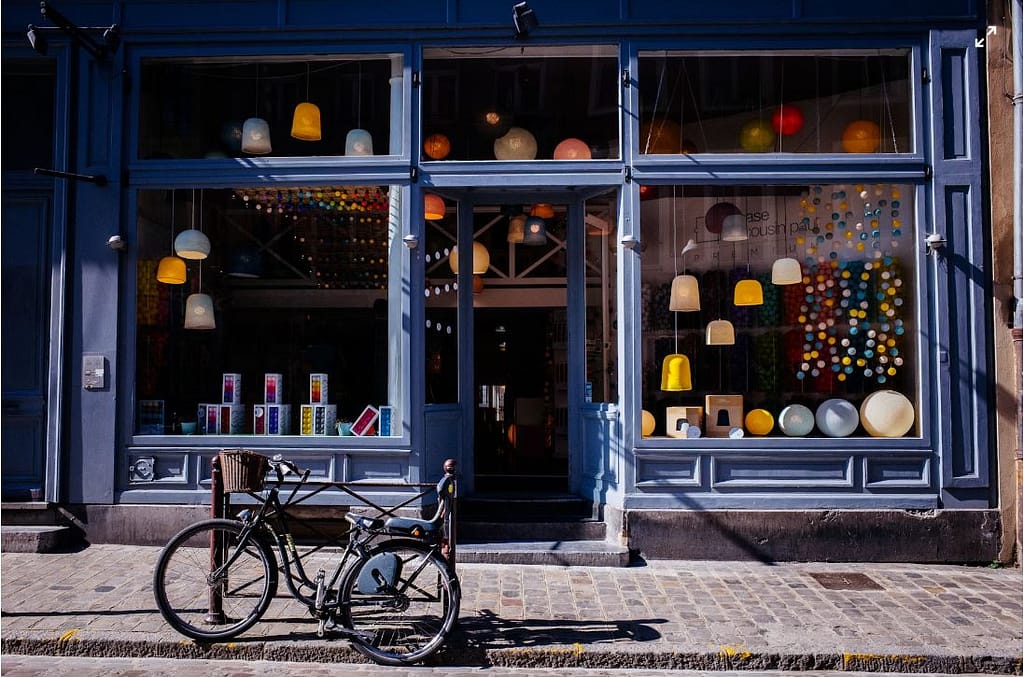When it comes to choosing windows for your commercial building or storefront, it’s important to understand the different types of glass available to you. Here’s a breakdown of the most common types of commercial windows:
Types of Glass
- Frosted Glass: Similar to storefront windows but with a frosted finish for privacy. They allow light to pass through, but passersby cannot see inside.
- Pros: Provides privacy, diffuses light.
- Cons: Limits visibility, may require more cleaning.
- Uses: Medical offices, spas, salons, anywhere requiring privacy.
- Laminated Glass: Laminated glass is made by sandwiching a layer of polyvinyl butyral (PVB) between two or more layers of glass and bonding them together under heat and pressure.
- Pros: Safety (holds together when shattered), sound reduction, UV protection.
- Cons: More expensive than regular glass, can be heavier.
- Uses: Storefronts on busy streets where sound reduction enhances the shopping experience. This type of glass is very versatile.
- Tempered Glass: Tempered glass is treated with heat or chemicals to increase its strength compared to regular glass. When broken, it shatters into small, dull pieces instead of sharp shards.
- Pros: Safety (reduced risk of injury from shattered glass), heat resistance, scratch resistance.
- Cons: Cannot be cut or drilled after tempering, more expensive than regular glass.
- Uses: Any storefront or business seeking security.
- Bulletproof Glass: Also known as ballistic-resistant glass, bulletproof glass is designed to resist penetration from bullets and other projectiles. It is made by layering multiple sheets of glass and plastic.
- Pros: High level of security, protects against forced entry.
- Cons: Very expensive, can be heavy and thick, may reduce visibility.
- Uses: Banks, schools, jewelry stores, government buildings, and embassies.
- Impact Glass: Impact glass is designed to withstand high-velocity impacts, such as those from hurricanes or tornadoes. It is made by sandwiching a layer of polyvinyl butyral (PVB) between two or more layers of glass.
- Pros: Protects against extreme weather conditions, reduces noise.
- Cons: More expensive than regular glass, can be heavier.
- Uses: Hotels, resorts, hospitals, schools, and commercial buildings in coastal regions like Florida and southern Texas.
Types of Windows
- Double-Hung Windows: Similar to single-hung windows, but both sashes are movable, allowing for more ventilation options.
- Pros: Versatile ventilation, easy to clean.
- Cons: Potential air leakage, may require more maintenance.
- Uses: Small storefronts with limited need for security and durability.
- Casement Windows: These windows have a single sash that is hinged on one side and opens outward with a crank handle.
- Pros: Excellent ventilation, tight seal when closed.
- Cons: Limited in size, can be difficult to install in certain areas.
- Uses: Used in offices, retail spaces, and other settings where natural light and airflow are desired.
- Awning Windows: Similar to casement windows, but hinged at the top and open outward from the bottom.
- Pros: Provides ventilation even during rain, energy efficient.
- Cons: Limited in size, obstructs outdoor space when open.
- Uses: Common in schools, office spaces, and retail stores where ventilation is important for comfort.
- Fixed Windows: These windows do not open and are used primarily for letting in light and views.
- Pros: Energy efficient, secure, affordable.
- Cons: No ventilation, cannot be used as an emergency exit.
- Uses: High-rise buildings, window displays, schools, hospitals.
- Sliding Windows: These windows have one or more movable panels that slide horizontally along tracks.
- Pros: Easy to operate, space-saving.
- Cons: Limited ventilation, tracks can accumulate dirt.
- Uses: Hotels or any building with a patio or outside area.
- Storefront Windows: Commonly used in retail settings, these windows are typically large panes of glass designed to showcase products. Storefront windows are often made of tempered glass, which is stronger and more durable than regular glass, making them resistant to breakage and vandalism.
- Pros: Attractive display, allows natural light in.
- Cons: Limited insulation, potential security risk.
- Uses: Anywhere where increased security is desired and passersby can easily look inside or “windowshop.”
When choosing windows for your commercial building, consider the building’s location, climate, security needs, and aesthetic preferences. JEM Glass, a Tampa, FL glass and glazing company, specializes in glass and glazing services for commercial properties. With our expertise and quality products, they can help you find the perfect windows for your building.
What is the difference between commercial glass and the glass used in homes?
Commercial glass is typically thicker and more durable than residential glass to withstand the demands of commercial buildings. It is often designed to meet specific safety and security requirements, such as impact resistance and fire safety.
Commercial glass may also have special coatings or treatments for energy efficiency and UV protection. In contrast, residential glass is usually thinner and more focused on aesthetics, offering a balance between natural light and insulation for the home.
How thick is commercial-grade glass?
Commercial-grade glass can vary in thickness depending on the application and safety requirements. But it is almost always thicker than residential glass. Common thicknesses for commercial-grade glass range from 1/4 inch (6 mm) to 1 inch (25 mm) or more.
Thicker glass is often used for storefronts, doors, and windows in high-traffic areas or where safety and security are a concern. Specialty applications, such as bullet-resistant or blast-resistant glass, can be even thicker to meet stringent safety standards.

